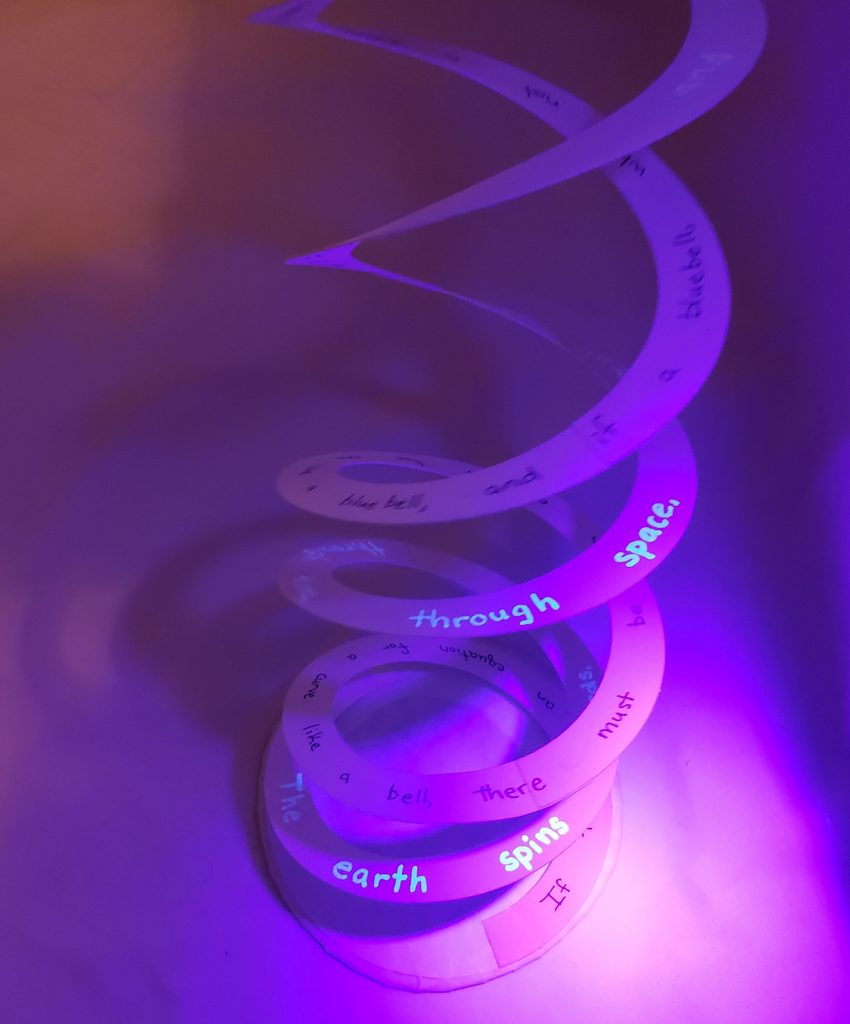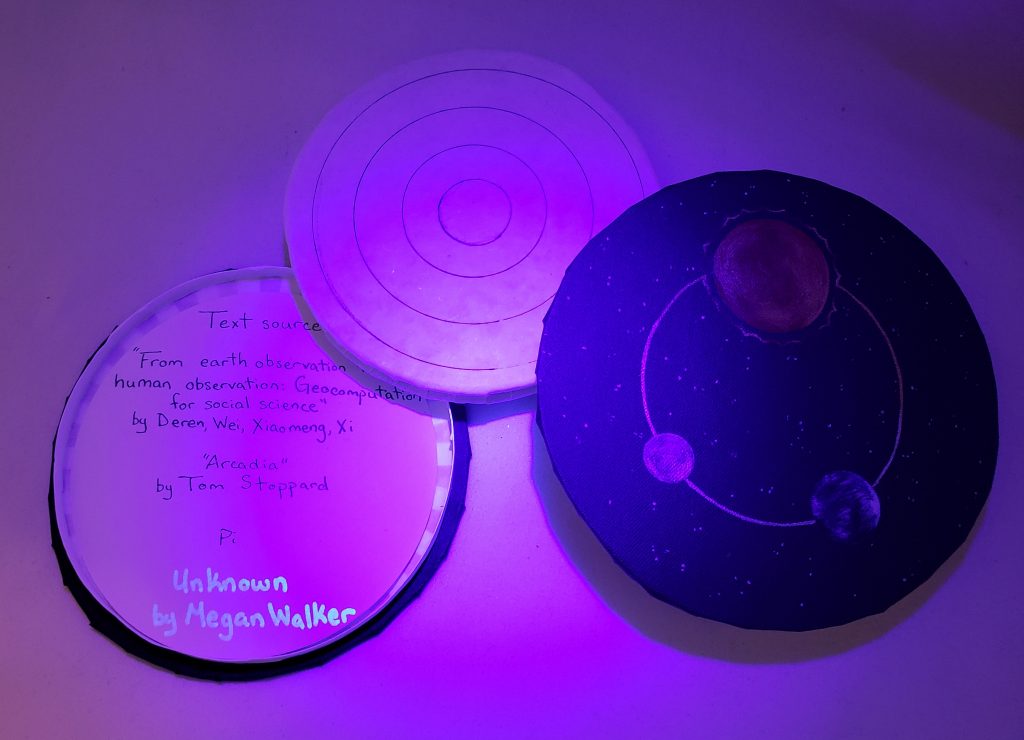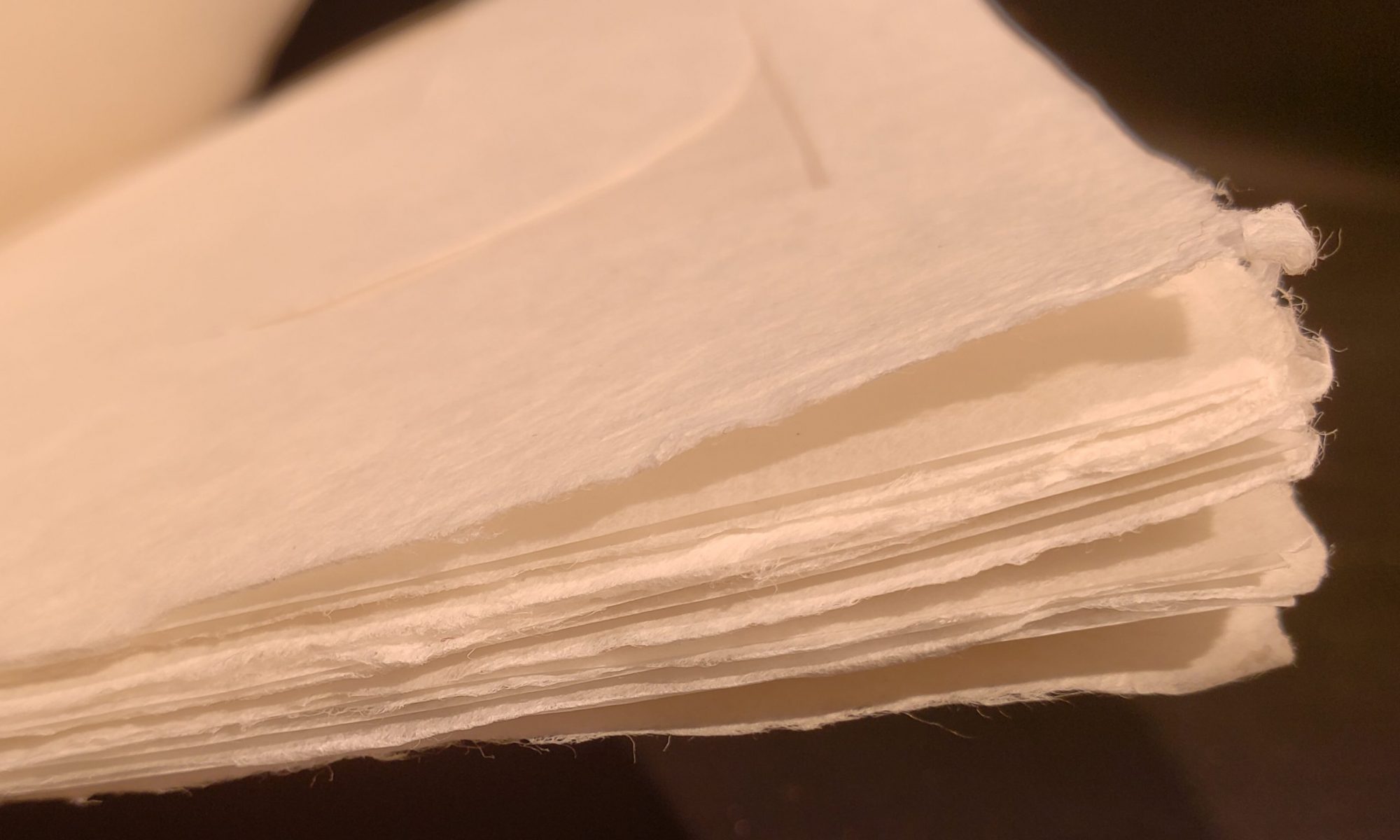[slideshow_deploy id=’690′]
This book is contained with a circular box made with book board, book cloth, and paper. On the top, a stylized design of the sun, earth, and moon are joined by a silver and gold circle and set on a background of stars. Opening the box, four black and concentric circles are inked into the white surface of this round book cover. Lifting it out of the box, the double helix form of the structure stretches, twists, and turns. Along the length of the curves, the words of the book are written. One lists the beginning values of the number pi, another has a quote from Arcadia by Tom Stoppard which poses the question of nature spelled out in mathematics, and the third transcribes the first couple sentences of From earth observation to human observation: Geocomputation for social science by Deren, Wei, Xiaomeng, and Xi.

The double helix of Our World under blacklight. 5 x 5 inches. Acrylic paint, white paper, black ink, invisible ink, and black book cloth. 2020. 
An image of the box cover, book cover, and box bottom under a blacklight. 5 x 5 inches. Acrylic paint, white paper, black ink, invisible ink, and black book cloth. 2020.
The surprise comes when a blacklight is passed across the paper. On the fourth side of the helix, written in invisible ink, is a poem about the unknown.
This work explores the concept of our world, in space with the cover of the box, in academia’s break down from STEM with pi to humanities with the quote from the play Arcadia, and in the double helix as a building block like DNA. The fourth text, with the invisible poem, leaves space for that which we, as a species, have yet to learn. This symbolism of four is repeated with the four inked circles on the book cover and again with the three planetary bodies joined by a fourth ring. Finally, the circular shape of the book returns to the physical realm with its connection to the sphere that is earth.
